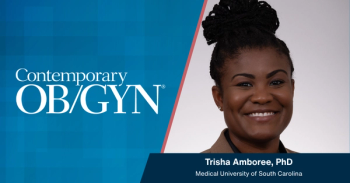
Are we getting the word out about emergency contraception?
Two experts debate whether unrestricted access to emergency contraception has really translated into awareness about how it works and how to get it.
Yes. We’ve made great strides in educating the public.
Frances Casey, MD
Dr. Casey is Director of Family Planning Services, Department of Obstetrics and Gynecology, Virginia Commonwealth University Medical Center, Richmond.
The rates of unintended pregnancy in the United States have changed very little in the past decade. Unrestricted access to over-the-counter (OTC) emergency contraception (EC) grants couples the autonomy to make their own reproductive decisions. This access provides a rich opportunity for healthcare professionals to engage in discussions with their patients regarding reproductive life plans. Whether this discussion is occurring as often as it should is debatable, but recent events have at least increased awareness among the public.
In 2013, debate concerning age restrictions on the sale of EC prompted vigorous discussion among health professionals, politicians, and parents alike. Studies assessing label comprehension demonstrated that adolescents younger than 17 could obtain adequate information for safe and effective use of EC without clinician supervision.1,2 The decision by the US Department of Justice to reverse its appeal of a US District Court ruling expanding access without age restrictions was applauded by the American Academy of Pediatrics (AAP), the American College of Obstetricians and Gynecologists (ACOG), and the Society for Adolescent Health and Medicine (SAHM).
Increasing access to online information has improved patients’ ability to learn about and potentially utilize EC. A simple search on “emergency contraception” results in
Widespread availability of EC and acknowledgement that couples should have autonomy to plan their families are steps toward reaching our common goal of reducing unintended pregnancies. We should encourage and promote healthcare professionals to educate themselves and their patients about the benefits and limitations of EC, and also acknowledge that any improvement in availability/awareness of contraceptive methods is a step in the right direction.
References
1. Raymond E, et al. Comprehension of a prototype emergency contraception package label by female adolescents. Contraception. 2009;79:199–205.
2. Cremer M, et al. Adolescent comprehension of emergency contraception in New York City.
NEXT: No. We assume that patients know more than they acutally do. >>
No. We assume that patients know more than they actually do.
Christine Isaacs, MD
Dr. Isaacs is Associate Professor and Director, General Obstetrics & Gynecology Division, Medical Director of Midwifery Services, Virginia Commonwealth Medical Center, Richmond.
After many tumultuous turns in the road to unrestricted access to OTC EC, the US Food and Drug Administration
Unrestricted legal access to OTC EC holds great promise for changing some of these statistics. But do we really have the word out-both within our profession and in the public sector? Are we really reaching the women who are most vulnerable to experiencing unintended pregnancies or are we missing an opportunity to empower these women with information?
One might think that such a profound policy change-allowing unrestricted access to one of the forms of EC-would prompt robust investigation and study on resulting behavior patterns, and clinical outcomes. One might also assume that such a “hot topic” in the medical literature would heighten the level of awareness of today’s busy clinicians. Sadly, a PubMed search from 2013 (the year of the FDA unrestricted approval) to the present day using “emergency contraception pill” and “United States” produces only 6 citations. Out of sight, out of mind.
Ob/gyn residents have been shown to receive little formal training about barrier and OTC contraceptive options (condoms, spermicides, sponges, etc.) and as a result, they want more education because of perceived inadequate knowledge.2 It would be terribly unfortunate if OTC availability of Plan B One-Step created an accidental assumed knowledge of its purpose, mechanism of action, and unrestricted accessibility. How many of us feel comfortable and confident counseling patients on the pros and cons of the various methods of EC? How many of us counsel our patients that yes, even men can purchase OTC Plan B One-Step without restriction?
We cannot afford to have such an important victory in women’s reproductive health lessen our enthusiasm for public education, physician education, research, and family planning advocacy. We must stay steadfast in our commitment to women’s reproductive health issues and not assume that FDA approval of the unrestricted sale of Plan B One-Step (and the associated “sound bites” referencing it on the evening news) are synonymous with true patient education and physician awareness.
References
1. Guttmacher Institute. State policies in brief: Emergency Contraception.
2. Miklavcic AY, Isaacs CR. Obstetric-gynecology resident education regarding barrier and over-the-counter contraceptives: a national study. J Women’s Health. 2012;11:1196–1200.
Newsletter
Get the latest clinical updates, case studies, and expert commentary in obstetric and gynecologic care. Sign up now to stay informed.




















